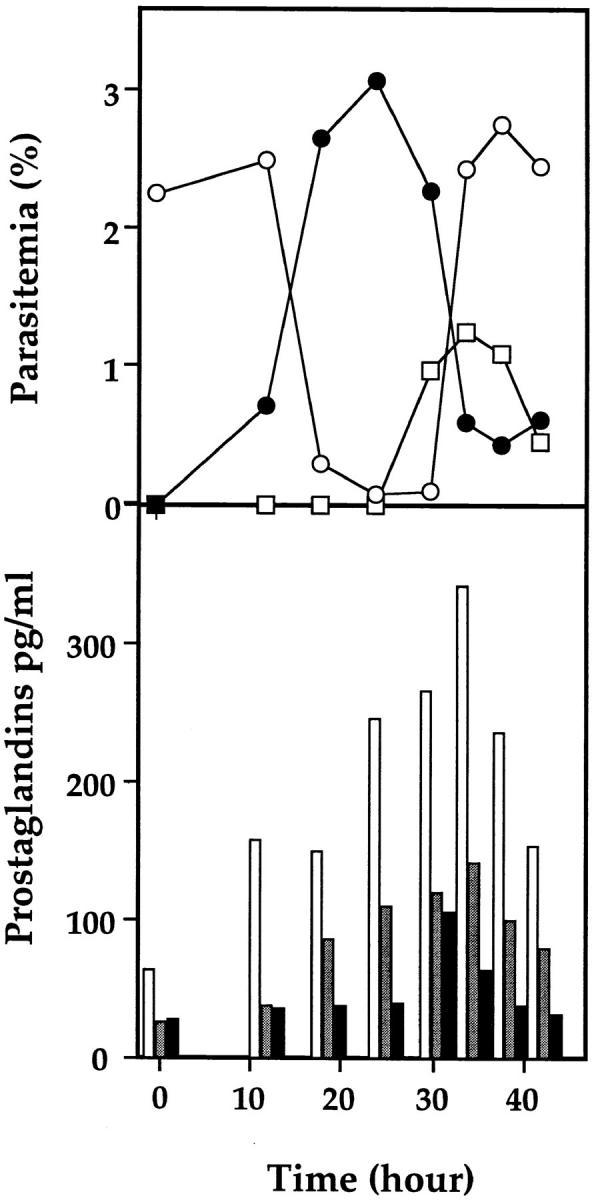Figure 3.

Time course of PG release from parasite cells. A ring-rich parasite cell culture (120 ml) of P. falciparum FCR3 strain was grown in complete medium containing 33 μM AA for 48 h. This culture was then treated with sorbitol and incubated for 30 h followed by a second sorbitol treatment to obtain synchronized early rings with a life span of 4–6 h after invasion of fresh RBCs. The synchronized 120-ml culture, supplemented with additional AA, was divided into 10 plastic plates. The time course was started after the last sorbitol treatment. The culture in each plate was centrifuged at 1,800 g for 5 min at room temperature at the indicated times and washed twice with incomplete medium. Fresh complete medium containing 33 μM AA was added to the culture, and the cultivation was continued for another 2 h. The culture supernatant (8 ml) was then collected by centrifugation at 5,000 g and stored at −80°C until PG quantification by EIA was performed. The Giemsa-stained parasite cells were counted microscopically. Open and filled circles and open squares represent ring, trophozoite, and schizont, respectively. White, light gray, and dark gray bars represent PGD2, PGE2, and PGF2α, respectively.
